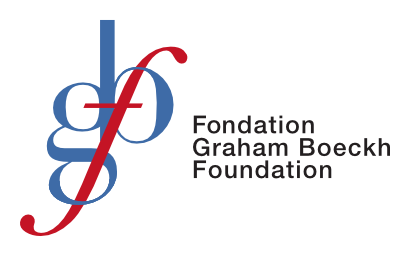Goal is to improve health care in five years
A partnership between the Canadian Institutes of Health Research (CIHR) and the Graham Boeckh Foundation (GBF) will tackle the challenge of getting improved mental health services to adolescents and youth in need. GBF is a private foundation that was created by the Boeckh family to fund research and other initiatives related to mental health and other related disciplines.
| At a Glance |
|---|
| Who: David Peckham, director of Strategic Program Design and Analytics, CIHR. Joelle Sholzberg, spokesperson, GBF. |
| Issue: There are currently a variety of mental health services available to adolescents and youth across Canada, but we do not know which programs are most effective. |
| Approach: CIHR and GBF have come together to create the Transformational Research in Adolescent Mental Health (TRAM) program, which will form a network to identify and expand innovative mental health programs. |
| Impact: TRAM's goal is to improve mental health outcomes for young people in Canada within five years. |
CIHR and GBF have joined forces to launch the Transformational Research in Adolescent Mental Health (TRAM) program, which aims to fund a research network that will identify, expand and implement innovative mental health programs. The network will focus on mental health for youth aged 11 to 25 years. The two organizations are combining both financial and intellectual resources to do this.
"TRAM's key goal is to improve mental health outcomes for young people in Canada within five years," says Joelle Sholzberg, GBF spokesperson. To accomplish this, the two organizations are contributing a total of $25 million over five years. But it will be more than just an agreement between two funding organizations: it will be a partnership between patients and family; policy makers; researchers; service providers; community organizations, and others, according to Ms. Sholzberg.
"This is our first private sector partnership in this area of this scale," says CIHR's David Peckham, director of Strategic Program Design and Analytics.
While a variety of outreach and treatment programs exist in Canada, one of the goals of the network is to find ways to expand the best programs, and make them more widely available.
But it will take the collaborative efforts of multiple partners to do this, according to Mr. Peckham. Groups from across Canada are already working together to generate ideas and draft plans for the final network. Stakeholders are currently sharing ideas at meetings, conferences, through social media and more.
The range of experience and expertise in this sort of project is new too, but CIHR and GBF organizers say it is essential. "It's a learning experience for both organizations," Mr. Peckham says.
He notes that one can have a great treatment or other program that works well in a controlled research environment, but it takes someone who works in the community, a policy maker, or a patient to say whether or not it's practical in a real-life setting. That's why the network needs to have such a wide range of experience.
"It's patient-oriented research. People in the network will look at what's out there, what's successful, what works and how we can make it national and effective, there might be something new. We expect new and innovative ideas," says Mr. Peckham.
"The end result of TRAM will be innovative interventions, practices, therapies or policies that will be taken out of the research environment and into common use in the real world," says Ms. Sholzberg.



